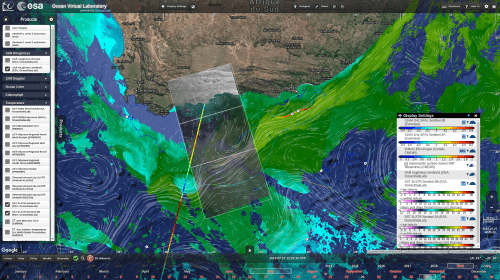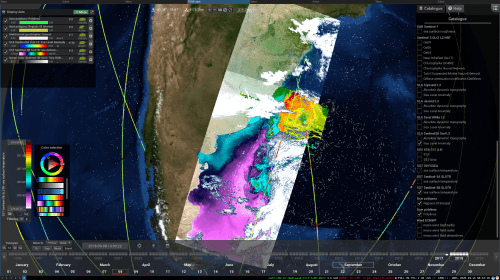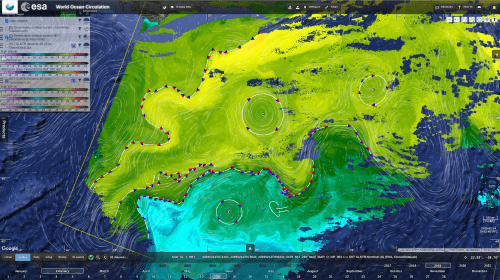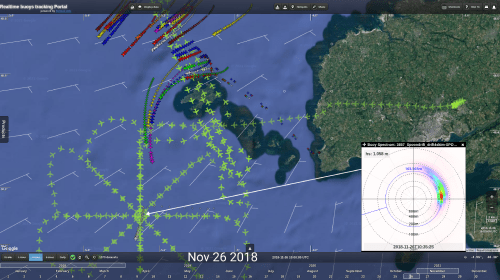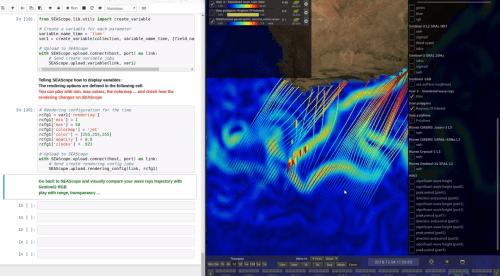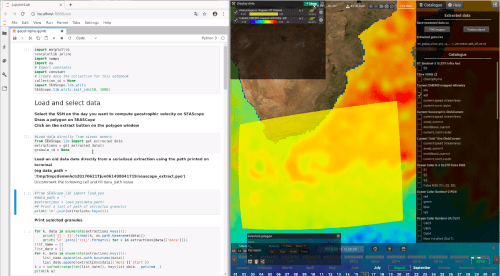These tools are already widely used by the scientific community. Illustrations of possible use cases of both online and standalone tools are shown below:
Synoptic chart of the upper ocean dynamics
Basic drawing capabilites are available, shapes can be imported and exported in JSON/GeoJSON/KML. It can be used to build training datasets for machine learning algorithms and provide guidance for ship routing.
Realtime visualisation of campaign at sea
Dedicated online portal has been set up for planning the DRIFT4SKIM campaign, monitoring the deployment in real time and analysing results. This has been useful to adapt the in-situ/airborne colocation in real time.
Wave current interaction simulation
Ocean current data are selected and extracted in SEAScope, used in a Jupyter python notebook to simulate wave current interaction and resulting waves rays are viewed in SEAScope together with contextual datasets.
Geostrophic currents computation
Sea level data are extracted in SEAScope, sent to a Jupyter python notebook. Geostrophic currents are derived from the exported data, analysed and sent back to SEAScope to be compared with other currents or in-situ data.
